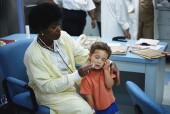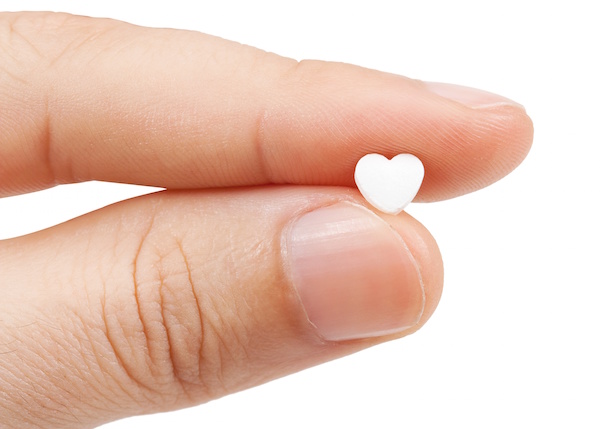
TUESDAY, Sept. 8, 2015 (HealthDay News) — Fewer children are winding up in emergency rooms for accidental poisonings involving commonly used medications, a new U.S. government study finds.
“We think these declines are real,” said lead researcher Maribeth Lovegrove, of the U.S. Centers for Disease Control and Prevention’s division of healthcare quality promotion.
Between 2004 and 2013, approximately 640,000 children aged 5 and younger were seen in emergency rooms for ingesting drugs. Of these, 70 percent were 1- or 2-year-olds, and nearly one in five were hospitalized, according to the report.
The number of pediatric emergency room visits rose during the early 2000s, peaking at approximately 76,000 in 2010, but declined to approximately 59,000 visits in 2013, Lovegrove said.
While there has been a decline in emergency room visits, 59,000 visits a year for young children is still too many, Lovegrove said.
“Innovative approaches, such as improved safety packaging and targeted educational messages, may be needed to continue or even accelerate this decline,” she said.
The report will appear in the October print issue of the journal Pediatrics.
The CDC researchers found that between 2010 and 2013, 91 percent of emergency room visits involved ingestion of one medicine.
Nearly half involved prescription pills, tablets or capsules. Almost a quarter involved over-the-counter pills, tablets or capsules, Lovegrove said. In addition, about 12 percent involved an over-the-counter liquid medicine, such as cough syrup.
Four medications caused almost all (91 percent) of the emergency room visits for over-the-counter liquid medication exposures. And these were almost always (87 percent) children’s or infants’ versions, Lovegrove said.
The four are:
- Acetaminophen (Tylenol), which was the cause of 33 percent of visits for liquid exposures — about 2,600 annual visits.
- Cough and cold medicines, such as Robitussin and Delsym, which were involved in nearly 28 percent of visits for over-the-counter liquid exposures — about 2,200 annual visits.
- Ibuprofen (Advil, Motrin), which were involved in 16 percent of visits — about 1,200 annual visits.
- Diphenhydramine (Benadryl), which was involved in 16 percent of visits — about 1,200 annual visits.
“In contrast, more than 260 different prescription pills, typically intended for adults, were involved in emergency room visits for unsupervised exposures in young children,” Lovegrove said.
The most common ones were narcotics, such as buprenorphine, oxycodone or hydrocodone. Those were involved in 14 percent of visits. They were followed by the psychiatric drugs known as benzodiazepines, including clonazepam (Klonopin) and alprazolam (Xanax), which were involved in 13 percent of visits.
Dr. Rodney Baker, clinical director of the division of emergency medicine at Nicklaus Children’s Hospital in Miami, said, “I’ve seen the numbers go down over the last several years.”
Baker thinks whatever pediatricians are doing to warn parents to keep medicines out of kids’ hands is working.
Tamper-proof packaging may also be helping keep kids from getting into medications, Baker said.
“Unsupervised medication exposures are preventable,” Lovegrove said. “Curious young children can act quickly, but following a few simple steps every time medicines are used can help decrease the chance of a child getting into medicines and ending up in the emergency room,” she said.
Lovegrove said parents and other caregivers can:
- Keep all medicines in a safe location that is too high for young children to reach or see.
- Always relock the safety cap on a medicine bottle, and return all medicines to the safe storage location after each use.
- Never tell children medicine is candy so they’ll take it, even if your child does not like to take medicine.
- Remind babysitters, family members and other visitors to keep purses, bags or coats that have medicines in them out of sight when they are in your home.
- Whenever possible, keep medicines in the original child-resistant containers. Other containers, such as pill organizers or plastic bags, often lack child safety features and can be easily opened.
- Program the Poison Help number (1-800-222-1222) into your home phone and cellphone so you will have it when you need it.
More information
Visit the U.S. Centers for Disease Control and Prevention for more on kids and drugs.
Copyright © 2025 HealthDay. All rights reserved.

